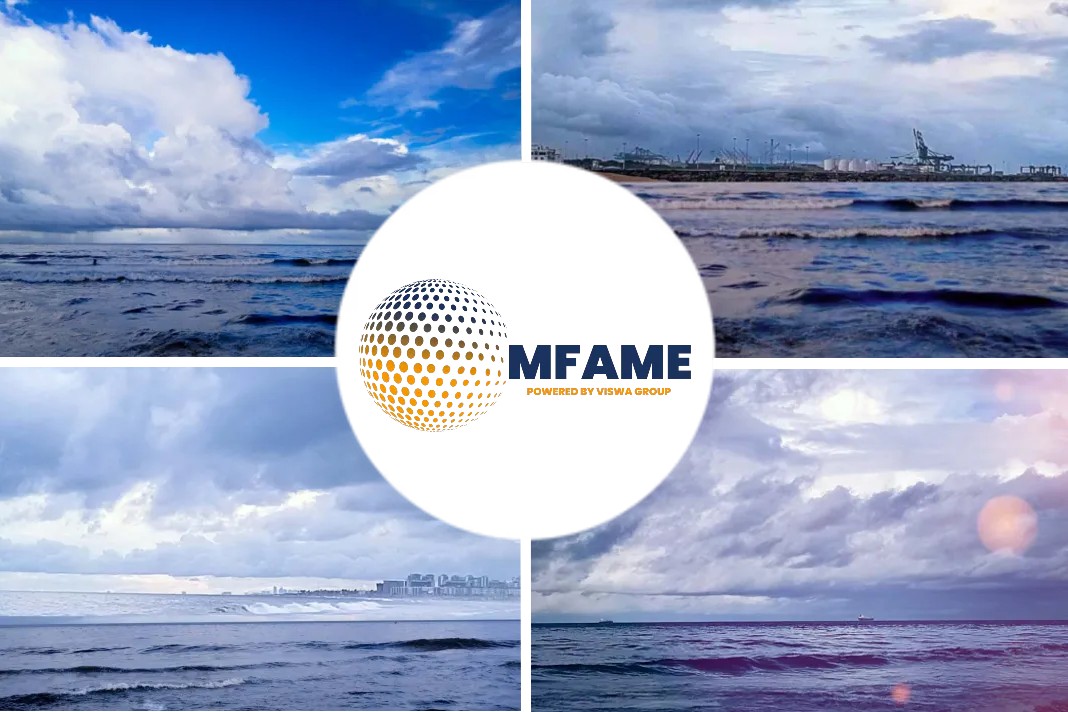
This article deals with an interview published in the Ship and Bunker on Waterfront Shipping Shares Insights on Methanol Bunkering.
Methanol is set to play a meaningful part
There is now little question that methanol is set to play a meaningful part of the future marine fuel mix, and bunker companies need to ready themselves to supply this new fuel.
While a handful of methanol-powered ships have been in service for some years, following
Maersk’s first order for methanol-powered tonnage in 2021 the momentum building behind
the adoption of the alternative fuel cannot be denied.
Set to enter into service later this year, the 2,100 TEU capacity vessel will eventually be joined by the 18 other methanol-powered box ships that the world’s second largest box shipper by capacity currently has on its order book.
Since that first order a number of Maersk’s peers have also backed methanol, including CMA CGM who have 24 methanol-powered ships on its order book.
Across all shipping sectors, DNV data indicates that within the next five years there will be more than 100 ships capable of burning methanol as a marine fuel, growing from just 26 today.
A decade ago discussions over the adoption of LNG as marine fuel were dogged by a lengthy ‘chicken-and-egg’ debate over who would be first to act – the supply side or the demand side.
The uptake of methanol looks to have dispensed put methanol bunkering assets in place.
Among those are Singapore’s Consort Bunkers, who have six methanol bunker barges on
order, while in Europe, Stena Oil is expecting the delivery of its first methanol bunkering vessel in June.
Bonafide part of the marine fuel mix
Elsewhere, some of the world’s top bunker companies have privately told Ship & Bunker that they are not only looking at methanol bunkering, but could offer methanol bunkers to interested customers at relatively short notice.
As the wider marine fuel supply industry prepares for the arrival of methanol as a bonafide part of the marine fuel mix, there are stakeholders that already have significant experience in bunkering methanol.
Perhaps the most notable of those is Waterfront Shipping (WFS), the majority owned
subsidiary of Methanex, the world’s largest producer and supplier of methanol.
WFS has been bunkering and burning methanol in its fleet of methanol-powered tankers since 2016.
Ship & Bunker recently spoke to Paul Hexter, President of Waterfront Shipping, to better
understand where, and how, it has been lifting methanol bunkers.
“Since 2016 WFS has been loading methanol as a marine fuel from most of our Methanex
production sites – Punta Arenas, Chile; Geismar, USA; Trinidad & Tobago; and New
Plymouth, New Zealand. These locations are also where WFS loads methanol as a cargo,”
Hexter explained. “Methanex and WFS are also demonstrating methanol bunkering in an increasing number of ports where there is existing methanol infrastructure including Rotterdam and Gothenburg.”
As Ship & Bunker previously reported, in 2021 WFS demonstrated the first-ever barge-to-ship methanol bunkering operation at the Port of Rotterdam via its tanker Takaroa Sun.
“The Takaroa Sun became the first methanol-powered ship to be fueled by a standard barge, proving that methanol is safe to ship, store, handle and bunker using procedures similar to those for conventional marine fuels, and with only minor modifications and minimal incremental cost,” said Hexter.
“In early 2023, in partnership with Stena Line and the Port of Gothenburg, we successfully
demonstrated the first ship-to-ferry methanol bunkering at the Port of Gothenburg.
Bunkering the Stena Germanica Ferry from an E&S Tankers vessel.”
Bunkering Methanol vs Other Marine Fuels
As the industry looks to move away from oil-based fuels, one of the attractions of methanol is that it has very similar on-board handling characteristics to today’s distillate fuels.
This means that retrofitting vessels and bunkering assets to use methanol is a relatively
straightforward and commercially viable process.
Indeed, Soren Toft, CEO of MSC, the world’s largest shipping company, recently told Ship &
Bunker he believed “methanol will be one of the preeminent retrofit options” for ships.
In contrast, alternatives such as LNG, that is a cryogenic liquid, require rather different
bunkering assets with vessel retrofits.
“As a liquid fuel, the bunkering of methanol is very similar to that of current diesel bunker fuels.
Minimal modifications to a bunkering barge are needed. The bunkering principle is the same where manifolds are connected using a single methanol suitable hose,” Hexter said.
“At our production sites, we load the methanol to be used as a marine fuel as part of, and
simultaneously with, the methanol to be carried as a cargo, through the same manifold connection.
“If loading methanol as a marine fuel is at a place other than our production sites, then a
second connection specific for the methanol would be required, similar to when taking
conventional bunkers from a shoreline.
“Everything else remains the similar as bunkering with conventional marine fuels.”
Having already gained a wealth of experience on methanol bunkering for its own ships, I asked Hexter if WFS had any plans to provide methanol bunkers to third party ships.
“Methanex and WFS has led the commercialization of methanol as a marine fuel since its
inception including supporting stakeholders in the industry to put in place bunkering
infrastructure and regulations,” he said.
“We look forward to servicing the shipping industry as the uptake of methanol as a fuel grows.”
Did you subscribe to our Newsletter?
It’s Free! Click here to Subscribe!
Source: Ship and Bunker















